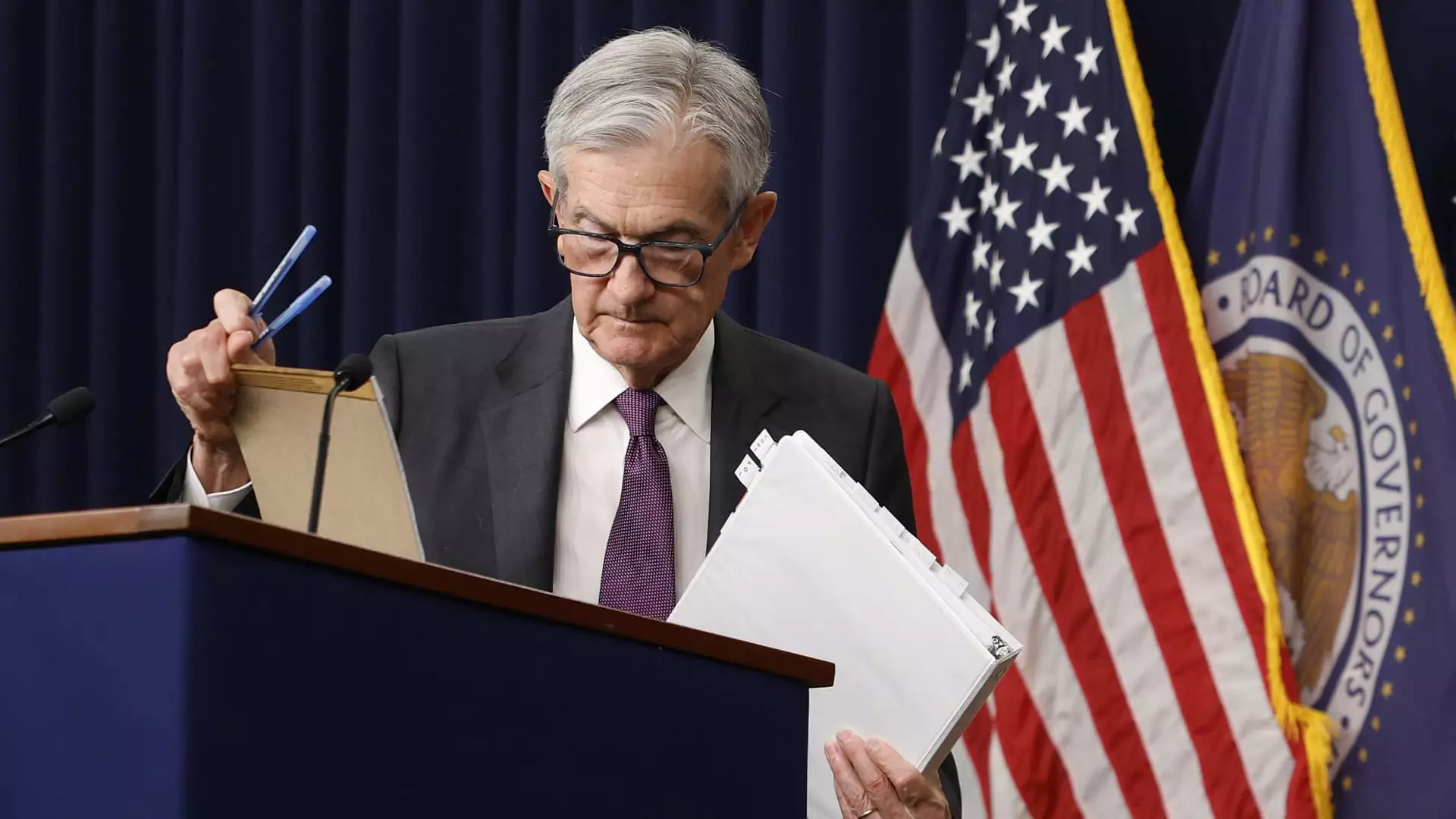In today’s volatile landscape, the tug-of-war between inflation control and economic growth represents one of the most daunting challenges faced by policymakers. Federal Reserve Chair Jerome Powell brought this issue to the forefront during a recent address, capturing the precarious nature of our economic situation. As globalization, tariffs, and domestic production rates intertwine in complex ways, the tools at the Fed’s disposal seem increasingly inadequate in addressing the multifaceted challenges that lie ahead. This article delves into the relationship between tariffs, inflation, and the Fed’s dual mandate, presenting a critical view on the path forward.
The Role of Tariffs in Economic Policy
President Trump’s tariffs, initially framed as a strategy to protect American jobs, now stand as a double-edged sword. While aimed at long-term benefits, their immediate effects have been anything but favourable. Powell articulated that these levies essentially impose a tax on goods that could inadvertently stifle consumer spending—a principal driver of economic growth. The irony of seeking to elevate job security through tariffs is that they may ultimately detract from it by sparking inflationary pressures that lead to decreased purchasing power.
Tariffs disrupt market equilibrium, pushing prices upward and generally distancing the economy from macroeconomic stability. Powell noted that tariffs “likely move us further away from our goals” of stable prices and full employment, a statement that reverberates alarm bells among economists and consumers alike. If the government imposes taxes on imports, it raises the cost of living for ordinary citizens, leading to a contraction in real disposable incomes. This poses the question: Is the temporary shield offered to certain industries worth the broader economic implications?
The Tug of War: Inflation vs. Growth
The Federal Reserve’s mission is to maintain stable prices while ensuring full employment, and the balance between these dual mandates has never felt more precarious. Powell’s acknowledgment of a potential conflict between controlling inflation and promoting growth is a stark reflection of reality. When inflation begins to rise, the natural inclination of policymakers might be to tighten monetary policy, raising interest rates to quell further price increases. In contrast, a fragile growth outlook may necessitate the opposite approach—lowering rates to stimulate borrowing and investment.
This dichotomy emphasizes a fundamental challenge in monetary policy: reactionary measures may have time-lag effects. Consequently, taking aggressive action against inflation could stifle growth at a sensitive juncture, which invites the danger of crafting a more intractable economic malaise. The instinct to stabilize through interest rate adjustments does not always align with prevailing economic conditions.
The Predictive Power of Economic Indicators
As markets grapple with uncertainty, data surrounding consumer spending and retail sales pose additional complexities. Recent reports illustrate that while retail sales surged, much of this increase can be attributed to consumer behaviour ahead of the impending tariffs. It raises questions about the sustainability of this growth and the ramifications of artificially inflating figures. A thriving economy is not merely about immediate sales but also about long-term solvency and confidence among consumers.
As Powell noted, despite some optimistic indicators, such as a 1.4% rise in retail sales in March, the anticipated first-quarter GDP growth reflects a lack of underlying robustness in the economy. The environment is riddled with businesses attempting to navigate the uncertainty surrounding tariffs, which may lead to temporary spikes in imports now but could hinder future domestic production and investment. Such fluctuations complicate the landscape for the Fed, presenting a dual-edged sword in its mission.
The Long-Term Outlook: Inflation or Growth?
Looking ahead, the ongoing adjustments required from the Federal Reserve may not be as simple as choosing between raising or lowering interest rates. It demands a comprehensive understanding of both inflationary trends and growth forecasts. Powell’s testimony indicates that inflation expectations are rising, but does this truly signify an embrace or an apprehension towards higher expenses?
It is essential also to recognize the role of consumer sentiment and market psychology in shaping economic trajectories. Should consumers perceive the strains of inflation as a long-term fixture, they may alter spending habits, exacerbating the economic crunch. Thus, the path forward hinges not just upon policy measures but also on the narratives woven into the fabric of market perceptions.
An Uncertain Future
As the Federal Reserve navigates through this tumultuous economic terrain, the tension between inflation control and growth support will continue to exist. The future remains vast and uncertain, with Powell’s remarks signalling a cautious approach. In the end, much hinges not only on statistical measures but also on the collective views, decisions, and actions of policymakers, businesses, and consumers alike. The economic landscape is evolving, and the choices made in the immediate timeframe will resonate long into the future. The stakes are high, and the decisions taken will uncover their true costs, one way or another.

